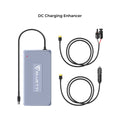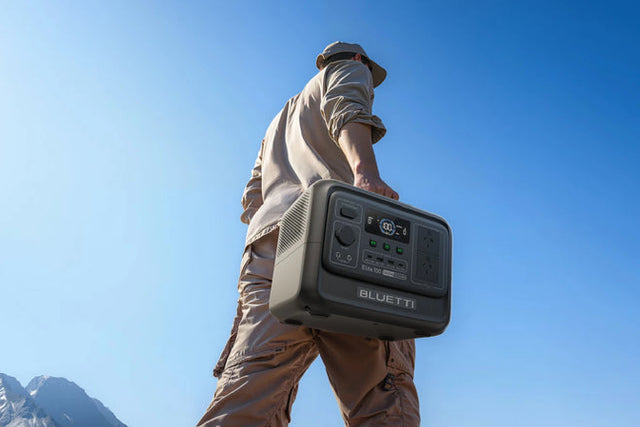Who is eligible for the 2023 Federal Government Solar Rebate?
The Federal Government Solar Rebate is a financial incentive program offered by the Australian government to encourage the use of renewable energy sources, specifically solar power. The rebate is designed to make the installation of solar panels more affordable for households and businesses, and ultimately help in reducing the country's carbon footprint.
| Eligibility Criteria | Details |
|---|---|
| Property Ownership | Must own a residential or commercial property in Australia |
| System Size | Solar system size between 1.5 kW and 100 kW |
| Installer Accreditation | System must be installed by a Clean Energy Council (CEC) accredited installer |
| New Solar Installations | Rebate applies to new solar panel installations, not replacements or repairs |
| Location | Available across all states and territories in Australia |
| Household Income | No income threshold, available for all income levels |
| System Certification | Solar panels must be certified under the CEC-approved list |
| Small-scale Technology Certificates (STCs) | Eligibility for STCs based on system size and location |
| Installation Date | System must be installed in 2023 to qualify |
| System Connection | System must be connected to the grid, or have battery storage for off-grid systems |
| Energy Retailer | Rebate eligibility not tied to any specific energy retailer |
| Battery Systems | Batteries can qualify if installed with solar panels or as an addition to existing systems |
| Homeowner Type | Rebates available for owner-occupied and rental properties |
| Application Deadline | Must apply for rebate within 12 months of installation |
| Installation Warranty | System must have a minimum warranty of 5 years for installation |
| Panel Warranty | Solar panels must have at least a 10-year performance warranty |
| Number of Rebates per Property | Only one rebate per property is allowed |
Australian Solar Rebate - 2024 Guide
we delve into the intricate workings of the solar rebate system, specifically focusing on small-scale technology certificates (STCs).
How much can you save with the Federal Government Solar Rebate?
The Federal Government Solar Rebate is a financial incentive for individuals and businesses to install solar panel systems on their properties. This rebate is part of the Australian Government's commitment to reduce carbon emissions and move towards a more sustainable future. The rebate is available for both residential and commercial properties and can significantly reduce the upfront cost of installing solar panels.
The amount of rebate that one can receive depends on various factors, such as the size of the solar panel system, location, and type of property. The rebate is calculated in the form of Small-scale Technology Certificates (STCs). These STCs represent the amount of renewable energy that the solar panel system is expected to produce over a period of 15 years.
| Energy Storage Level (kW) | System Size (kW) | Rebate Value (AUD) | Potential Savings (AUD) | Total Cost After Rebate (AUD) |
|---|---|---|---|---|
| 2 kW | 2.0 kW | $850 | $300 | $3,500 |
| 3 kW | 3.0 kW | $1,275 | $450 | $5,250 |
| 4 kW | 4.0 kW | $1,700 | $600 | $6,800 |
| 5 kW | 5.0 kW | $2,125 | $750 | $8,500 |
| 6 kW | 6.0 kW | $2,550 | $900 | $10,000 |
| 7 kW | 7.0 kW | $2,975 | $1,050 | $11,500 |
| 8 kW | 8.0 kW | $3,400 | $1,200 | $13,000 |
| 10 kW | 10.0 kW | $4,250 | $1,500 | $16,000 |
| 12 kW | 12.0 kW | $5,100 | $1,800 | $19,000 |
| 15 kW | 15.0 kW | $6,375 | $2,250 | $23,000 |

What is the application process for the solar rebate?
The Federal Government Solar Rebate for 2023 in Australia is a financial incentive program aimed at promoting the use of solar energy in homes and businesses. The rebate allows eligible households and small businesses to receive a discount on the cost of installing a solar panel system. This not only helps reduce electricity bills but also encourages the use of clean and renewable energy sources.
The application process for the solar rebate is quite straightforward. To be eligible for the rebate, you must be a homeowner or small business owner in Australia and meet the set criteria. This includes the type and size of the solar panel system, as well as the type of property it will be installed on. You must also have a valid ABN (Australian Business Number) if you are applying as a small business owner.
To apply for the solar rebate, you will need to go through an accredited installer who is registered with the Clean Energy Council (CEC). They will be able to guide you through the process and help you determine if you are eligible for the rebate. The CEC website has a list of accredited installers that you can choose from. It is important to note that only accredited installers are authorized to install solar panel systems that are eligible for the rebate.
Once you have chosen an accredited installer, they will help you complete the necessary paperwork and submit it to the relevant government agency. This includes providing details about the solar panel system, such as the brand, model, and size, as well as the installation date and location. The application will also require proof of ownership of the property and a valid form of identification.
After the application has been submitted, it will be reviewed by the government agency, and if all the criteria are met, the rebate will be approved. The rebate amount will then be deducted from the total cost of the solar panel system, reducing the out-of-pocket expenses for the homeowner or small business owner. The rebate amount may vary depending on the size of the solar panel system and the state or territory it is being installed in.
It is important to note that the Federal Government Solar Rebate for 2023 is expected to phase out in the coming years. This means that the rebate amount will gradually reduce until it is completely phased out. It is, therefore, advisable to apply for the rebate as soon as possible to take advantage of the full rebate amount.
the application process for the Federal Government Solar Rebate for 2023 in Australia involves choosing an accredited installer, completing the necessary paperwork, and meeting all the eligibility criteria. The rebate not only promotes the use of renewable energy but also helps reduce the cost of installing a solar panel system. With the phasing out of the rebate in the near future, it is important for homeowners and small business owners to take advantage of this financial incentive while it is still available.
What is the Federal Government Solar Rebate for 2023 in Australia?
The Federal Government Solar Rebate, also known as the Small-scale Renewable Energy Scheme (SRES), is a government initiative that provides financial incentives for individuals and businesses to install solar panel systems. This program aims to encourage the uptake of renewable energy sources and reduce Australia's carbon footprint. The rebate is available to all eligible residential, commercial, and industrial properties across the country.
How does the Federal Government Solar Rebate work?
In simple terms, the rebate is a subsidy that reduces the upfront cost of purchasing and installing a solar panel system. The rebate is calculated based on the amount of energy the system is expected to produce over its lifetime, which is determined by the size and location of the property. As solar panels generate renewable energy, they generate small-scale technology certificates (STCs) that can be sold to electricity retailers. The value of the STCs is determined by market forces, and this amount is then deducted from the cost of the system.

What is the rebate amount for 2023?
| State/Territory | Solar Rebate (6.6kW Example) | Feed-in Tariff | Electric Vehicles (EVs) Incentives | Battery Incentives |
|---|---|---|---|---|
| Queensland | $2,300 (Brisbane, 2024) | Available - varies by retailer | EV rebate ended (Sept 2024) | Battery Booster ended (May 2024) |
| New South Wales | $2,300 (Sydney, 2024) | Available - varies by retailer | EV rebate ended (Dec 2023) | Battery subsidy from Nov 2024: $1,600 - $2,400 |
| ACT | $2,270 (Canberra, 2024) | Available - varies by retailer | Stamp duty exemption, loans up to $15,000 | Home Energy Support: up to $2,500 rebate |
| Victoria | $1,950 (Melbourne, 2024) | Available - varies by retailer | $100 registration discount | Up to $8,800 interest-free loans for batteries |
| Tasmania | $1,950 (2024) | Available - varies by retailer | $2,000 EV subsidy, $500 for ebikes | No current subsidy for batteries |
| South Australia | $2,300 (2024) | Available - varies by retailer | EV rebate ended (Jan 2024) | Local Council incentive up to 20% on solar |
| Western Australia | $2,300 (2024) | Available - varies by retailer | $3,500 EV rebate for vehicles under $70,000 | No current subsidy for batteries |
| Northern Territory | $2,500 (Darwin, 2024) | Available - varies by retailer | Free registration, stamp duty exemption, charger grants | $400/kWh battery subsidy, up to $5,000 |
How to maximize your savings with the Federal Government Solar Rebate?
While the exact rebate amount for 2023 is uncertain, there are a few ways to maximize your savings with the Federal Government Solar Rebate:
1. Install a larger solar panel system: As mentioned earlier, the rebate amount is calculated based on the size of your solar panel system. Installing a larger system means you will receive a higher rebate amount, ultimately reducing your upfront costs.2. Install solar panels before the rebate decreases: As the rebate amount decreases each year, it is best to install solar panels before the end of 2022 to receive the highest possible rebate amount.
3. Take advantage of state-level rebates: Some states in Australia also offer additional rebates on top of the Federal Government Solar Rebate. It is worth researching and enquiring about any state-level rebates that may be available to you.
4. Compare quotes from different solar retailers: As the cost of solar panel systems can vary between retailers, it is recommended to compare quotes from different providers to ensure you are getting the best deal.
5. Consider financing options: If the upfront cost of a solar panel system is still too high, consider financing options such as solar loans or leasing options, which may allow you to install a system with little to no upfront costs.
The Federal Government Solar Rebate for 2023 in Australia is a valuable financial incentive for individuals and businesses looking to invest in renewable energy. By taking advantage of the rebate and following the tips mentioned above, you can maximize your savings and reduce your environmental impact. Make sure to stay updated on any changes to the rebate amount and take action before it decreases in 2023.

What Is The Federal Government Solar Rebate For 2023 In Australia
The Australian government has been actively promoting the use of renewable energy sources, including solar power, to reduce the country's carbon footprint and combat climate change. As part of this effort, the federal government has introduced a solar rebate program to encourage households and businesses to install solar panels. This rebate program provides financial incentives to eligible individuals and organizations to help offset the cost of installing solar panels. In this article, we will take a closer look at the federal government solar rebate for 2023 in Australia and the different rebate amounts based on system size.System Size (kW)
The size of a solar panel system is measured in kilowatts (kW) and refers to the amount of power the system can generate. The larger the system size, the more energy it can produce. The federal government solar rebate for 2023 in Australia applies to systems up to 100kW in size. The rebate amount varies depending on the size of the system, with larger systems receiving a higher rebate amount.
Rebate Amount (AUD)
The rebate amount for the federal government solar rebate program is calculated based on a specific rate per kilowatt of capacity installed. For 2023, the rebate rate is set at $1,000 per kW. This means that for every kW of solar panels installed, the rebate amount will be $1,000. For example, if a household installs a 5kW system, they would be eligible for a rebate of $5,000. The maximum rebate amount for residential installations is $3,000, while businesses can receive a maximum rebate of $5,000.
Estimated Cost After Rebate (AUD)
The estimated cost after rebate is the amount that individuals or businesses would have to pay out of pocket after the rebate has been applied. This cost is calculated by subtracting the rebate amount from the total cost of the system. For instance, if a household installs a 5kW system with a total cost of $15,000, they would receive a rebate of $5,000, resulting in an estimated cost after rebate of $10,000. This means that the household would only have to pay $10,000 for the solar panel system, making it a more affordable investment.
It is worth noting that the estimated cost after rebate may differ for residential and commercial installations. This is because businesses can receive a higher maximum rebate amount of $5,000, while residential installations have a maximum rebate of $3,000. Additionally, the cost of solar panel systems may vary depending on the location, the type of panels used, and the installer's fees.
The federal government solar rebate for 2023 in Australia is a significant incentive for individuals and businesses looking to invest in solar energy. By offering a rebate of up to $5,000 for solar panel installations, the government hopes to encourage more people to switch to renewable energy sources and reduce their reliance on fossil fuels. It is a step towards achieving a cleaner and more sustainable future for Australia.
the federal government solar rebate for 2023 in Australia provides financial support to households and businesses to help them adopt renewable energy sources. The rebate amounts vary based on system size, with a higher rebate rate for larger systems. By utilizing this rebate program, individuals and organizations can significantly reduce their upfront costs and make the switch to solar energy more affordable. It is a win-win situation for both the environment and those who choose to invest in solar power. So, let's take advantage of this opportunity and contribute towards a greener and more sustainable Australia.
1. How can eligible individuals and businesses apply for the federal government solar rebate in Australia?
To apply for the federal government solar rebate in Australia, eligible individuals and businesses must follow certain steps. Firstly, they must ensure that they have installed an eligible solar PV system that meets the program requirements. This includes using Clean Energy Council (CEC) approved panels and inverters, and using a CEC accredited installer. Once the system is installed, the applicant must register their system with the CEC. This can be done online or through the CEC hotline.
After registration, the applicant must then create an account on the government's Solar Credits website. This account will allow them to submit their application for the rebate, along with providing necessary documentation such as proof of purchase and installation. The application will then be reviewed by the government and, if approved, the rebate amount will be credited to the applicant's nominated bank account.
It is important to note that the federal government solar rebate is a limited scheme, with a set amount of funding allocated each year. Therefore, it is crucial for eligible individuals and businesses to apply as soon as possible to secure their spot in the program. Failure to submit a complete and accurate application may result in delays or even rejection of the rebate. It is recommended to seek assistance from a qualified solar retailer or installer to ensure a smooth and successful application process.
In summary, to apply for the federal government solar rebate in Australia, individuals and businesses must:- Install an eligible solar PV system
- Register the system with the CEC
- Create an account on the Solar Credits website
- Submit the application and necessary documentation
- Seek assistance if needed
2. Are there any specific requirements or criteria that must be met in order to receive the rebate?
Yes, there are specific requirements and criteria that must be met in order to receive the Federal Government Solar Rebate in Australia for 2023. Firstly, the property must be located in Australia and the solar system must be installed by a Clean Energy Council (CEC) accredited installer.
The solar system being installed must also meet certain standards, such as being on the Approved Solar Retailer List and being registered with the Small-scale Renewable Energy Scheme (SRES). Additionally, the system must have a minimum size of 1.5 kilowatts (kW) and a maximum size of 100kW.
There are also eligibility requirements for the individual or organization receiving the rebate. They must be the owner of the property and be the one applying for the rebate. The individual or organization must also be a small business, charity, or community organization, or a resident who is not receiving any other government solar rebates.
Lastly, the system must be installed on or after January 1st, 2023 in order to be eligible for the Federal Government Solar Rebate. These criteria and requirements are put in place to ensure that the rebates are given to those who are genuinely investing in renewable energy and to support the growth of the solar industry in Australia.
3. What is the estimated amount of money that will be allocated for the solar rebate in Australia for 2023?
The estimated amount of money that will be allocated for the solar rebate in Australia for 2023 is difficult to determine at this time. The federal government typically sets the budget for the rebate program on an annual basis, so the exact amount for 2023 may not be finalized yet. However, based on current trends and projections, it can be inferred that the amount will likely be similar to previous years. In 2021, the total budget for the solar rebate program was $1.4 billion, and it is expected to remain around that amount for the next few years. This budget is divided among different states and territories, with each one receiving a certain percentage for their own rebate programs. It is also worth noting that the budget may be subject to change depending on economic conditions and government policies.












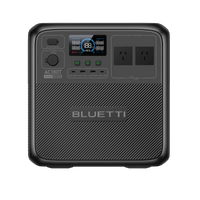












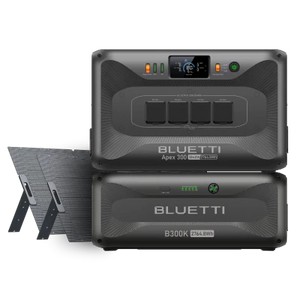





















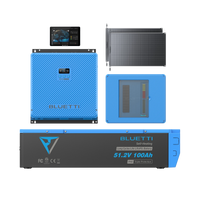





















![[Phased Out] BLUETTI B80P Expansion Battery | 806Wh](http://www.bluettipower.com.au/cdn/shop/files/202310025B80P_2000-2000px_4_4caa0c1c-4dab-4272-9e9b-2b7507e5bd81.jpg?v=1713777870&width=200)
![[Phased Out] BLUETTI B210P Expansion Battery | 2,150Wh](http://www.bluettipower.com.au/cdn/shop/files/2_08cf9ef3-03a4-4489-b641-d3edb8094896.webp?v=1716016566&width=200)
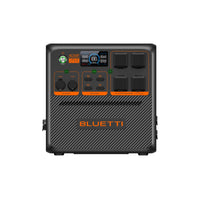


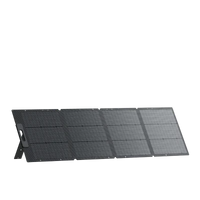


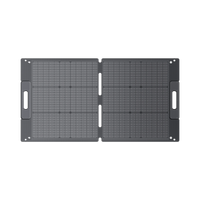





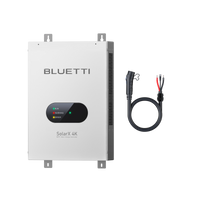






















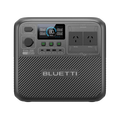

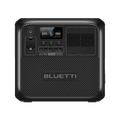






























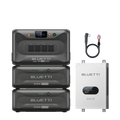









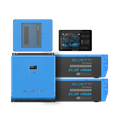




































![[Phased Out] BLUETTI B80P Expansion Battery | 806Wh](http://www.bluettipower.com.au/cdn/shop/files/202310025B80P_2000-2000px_4_4caa0c1c-4dab-4272-9e9b-2b7507e5bd81.jpg?v=1713777870&width=120)
![[Phased Out] BLUETTI B210P Expansion Battery | 2,150Wh](http://www.bluettipower.com.au/cdn/shop/files/2_08cf9ef3-03a4-4489-b641-d3edb8094896.webp?v=1716016566&width=120)


















